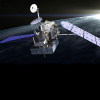Global Precipitation Mission: Improved, accurate and timely global precipitation information
Continuous and reliable global precipitation information is crucial for myriad of weather, climate and hydrological applications. The importance of precipitation in the form of rain, hail, sleet, snow etc. is known to science and clear to a layman. However, it’s quite tricky to measure past precipitation trends or predicting accurate future forecasts. There are three main categories of precipitation data sets available: ground based, satellite-based and blended products of ground and space data (Climate Data Guide, 2014).






